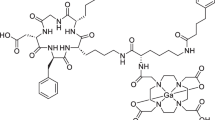Abstract
The pharmacokinetics of tasidotin (ILX651), a depsipeptide currently in phase II for the treatment of advanced solid tumors, and tasidotin-C-carboxylate, the main metabolite, were characterized in male nude mice implanted with LOX tumors, which are sensitive to tasidotin, or H460 tumors, which are resistant to tasidotin. The pharmacokinetics of tasidotin and its metabolites were characterized after singledose administration of tasidotin (20 and 120 mg/kg), tasidotin-C-carboxylate (150 mg/kg), or tasidotin (53 mg/kg) in the presence and absence of Z-prolyl prolinal (5 mg/kg administered 1 hour prior to tasidotin administration), a competitive antagonist of prolyl oligopeptidase, the enzyme responsible for the metabolism of tasidotin to tasidotin-C-carboxylate. A secondary study was done comparing tumor growth in tasidotin-treated mice with implanted LOX tumors in the presence and absence of Z-prolyl-prolinal. After tasidotin administration, the pharmacokinetics of tasidotin and tasidotin-C-carboxylate were similar in plasma and tumors in LOX- and H460-implanted mice, indicating the resistance was not due to pharmacokinetic factors. Tumor carboxylate concentrations were much higher than in plasma after tasidotin administration. The metabolite appeared to contribute ∼17% to 33% to the total exposure in LOX tumors and 20% to 49% in H460 tumors but <5% in plasma. Less than 5% of the administered tasidotin dose was converted to tasidotin-C-carboxylate, with no apparent differences between LOX- and H460-treated animals. The presence of Z-prolyl-prolinal decreased the amount of tasidotin converted to tasidotin-C-carboxylate from 5.5% to 0.90%, a reduction of almost 80%. After tasidotin-C-carboxylate administration, the half-life was on the order of minutes compared with hours when observed after tasidotin administration. Tasidotin-C-carboxylate elimination was not dependent on tasidotin pharmacokinetics, suggesting that the rate of efflux from cells into plasma was the rate-limiting step in its elimination. Tasidotin-C-carboxylate was also further metabolized to desprolyl-tasidotin-C-carboxylate, although the metabolite ratios were <10%. Pretreatment with Z-prolyl-prolinal completely abolished the antitumor activity of tasidotin, indicating that the metabolite is the main moiety responsible for activity and that, despite tasidotin itself having activity in vitro, tasidotin is acting mainly as a prodrug.
Similar content being viewed by others
References
Poncet J. The dolastatins, a family of promising antineoplastic agents. Curr Pharm Des. 1999;5:139–162.
Supko JG, Lynch TJ, Clark JW, et al. A phase I clinical and pharmacokinetic study of the dolastatin analogue cemadotin administered as a 5-day continuous intravenous infusion. Cancer Chemother Pharmacol. 2000;46:319–328.
Ray A, Okouneva T, Manna T, et al. Mechanism of action of the microtubule-targeted antimitotic depsipeptide tasidotin (formerly ILX651) and its major metabolite, tasidotin-C-carboxylate. Cancer Res. In press.
Ebbinghaus S, Rubin E, Hersch E, et al. A phase I study of the dolastatin-15 analogue tasidotin (ILX651) administered intravenously daily for 5 consecutive days every 3 weeks in patients with advanced solid tumors. Clin Cancer Res. 2005;11:7807–7816.
Cunningham C, Appleman LJ, Kirvan-Visovatti M, et al. Phase I and pharmacokinetic study of the dolastatin-15 analogue tasidotin (ILX651) administered intravenously on days 1, 3, and 5 every 3 weeks in patients with advanced solid tumors. Clin Cancer Res. 2005;11:7825–7833.
Mita AC, Hammond LA, Bonate PL, et al. Phase I and pharmacokinetic study of tasidotin hydrochloride (ILX651), a third-generation dolastatin-15 analogue, administered weekly for three weeks every 28 days in patients with advanced solid tumors. Clin Cancer Res. 2006;12:5207–5215.
Atack JR, Suman-Chauhan N, Dawson G, Kulagowski JJ. In vitro and in vivo inhibition of prolyl oligopeptidase. Eur J Pharmacol. 1991;205:157–163.
Boxenbaum H, Battle M. Effective half-life in clinical pharmacology. J Clin Pharmacol. 1995;35:763–766.
Friedman TC, Orlowski M, Wilk S. Prolyl oligopeptidase: inhibition in vivo by N-benzyloxycarbonyl-prolyl-prolinal. J Neurochem. 1984;42:237–241.
Wilk S. Prolyl oligopeptidase. Life Sci. 1983;33:2149–2157.
Bausback HH, Ward PE. Vascular, post proline cleaving enzyme: metabolism of vasoactive peptides. Adv Exp Med Biol. 1986;198:397–404.
Author information
Authors and Affiliations
Corresponding author
Additional information
Published: December 14, 2007
Rights and permissions
About this article
Cite this article
Bonate, P.L., Beyerlein, D., Crawford, J. et al. Pharmacokinetics in mice implanted with xenografted tumors after intravenous administration of tasidotin (ILX651) or its carboxylate metabolite. AAPS J 9, 45 (2007). https://doi.org/10.1208/aapsj0903045
Received:
Revised:
Accepted:
DOI: https://doi.org/10.1208/aapsj0903045




